

Top Left: Somerset & Dorset Joint Railway Goods
Brake & Mail Van. In October 1887 two six wheeled
20 ton brake vans were ordered for a proposed
goods train mail service between Bath and
Bournemouth. They were constructed at Derby in
1888 and had a specially designed body that was
divided into two compartments, one for the guard
and the other for the mail. Both vans survived to pass
into L.M.S. ownership in 1930.
Rolling Stock of the Somerset & Dorset Joint Railway
The Somerset & Dorset
Joint Railway
Above Middle: Somerset & Dorset Joint Railway
standard 8 ton 5 plank open goods wagon, this
particular wagon being built at Highbridge in 1886.
Many of these vehicles were later fitted with sheet
rails when they came in for overhaul.
Above Right: Somerset & Dorset Joint Railway peat
wagon. Fourteen 8 ton open wagons were fitted with
extension rails in 1911/12 for this trade.
Top Right: Somerset & Dorset Joint Railway 20 ton
goods brake van. These vehicles were built to cope
with the heavier goods trains over the Mendip Hills,
where in many cases two of these vehicles replaced
three 10 ton brake vans.
Above Left: Somerset & Dorset Joint Railway 10 ton
special cattle van. Two were built at Highbridge in
1910 and fitted with vacuum brakes.
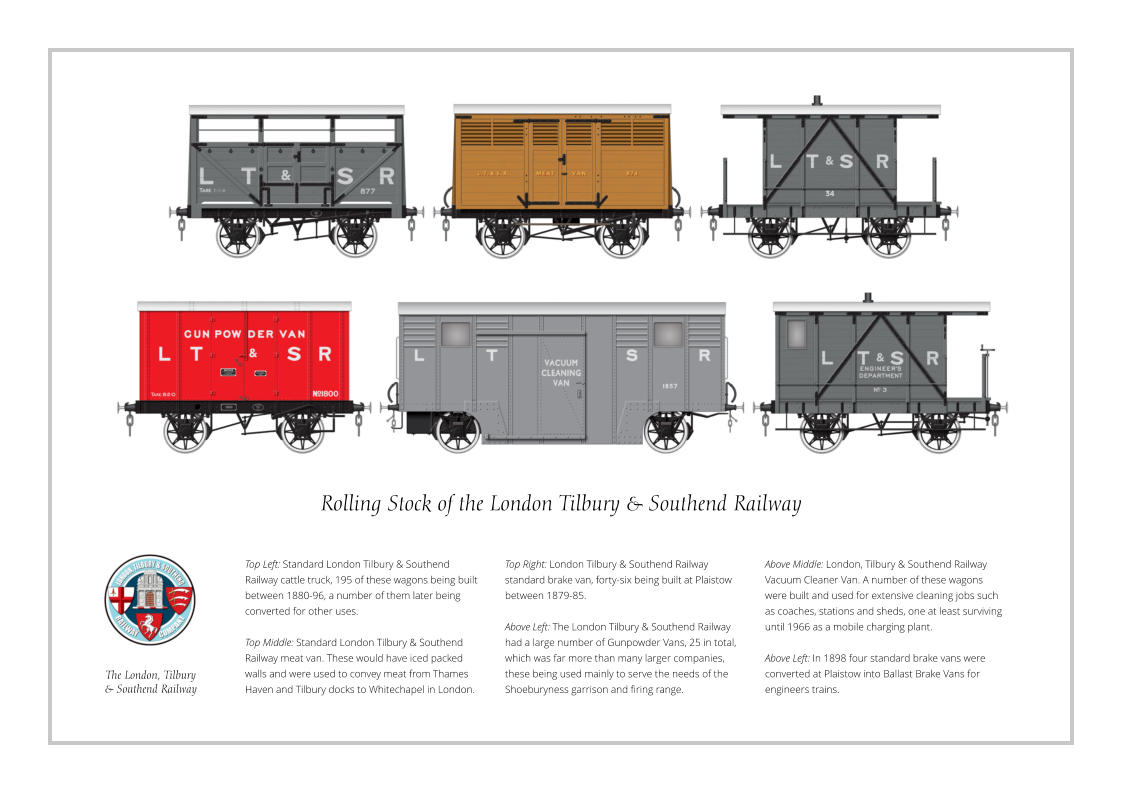
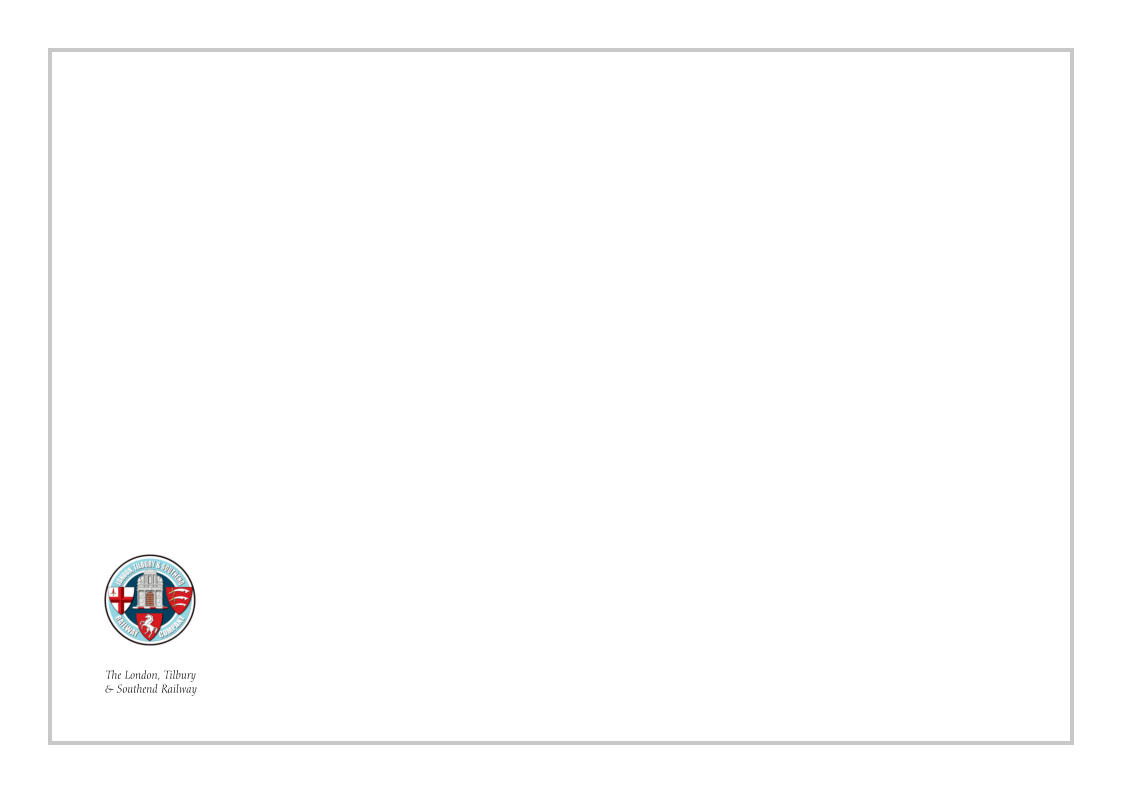
Top Left & Right: Shortly after the London Tilbury &
Southend Railway company regained control of their
line in 1876, their first coaching stock was delivered.
They were standard four wheel vehicles and either
had spoked or Mansell wheels. First class carriages
consisted of four compartments with seating for six
passengers in each, while both second and third
class had five compartments with seating for ten in
each. Most of the carriages survived to become
Rolling Stock of the London Tilbury & Southend Railway
of the twentieth century were of 15 tons capacity and
built by Cowens, Sheldon & Co. of Carlisle. In 1905,
the London, Tilbury & Southend Railway purchased
one such example which was based at the engineers
department at Plaistow in London. After the company
had become part of the London, Midland & Scottish
Railway, the crane was moved to Bescot in the
Midlands in 1933 where it remained until 1963 when
it was broken up.
Midland Railway stock in 1912 when they took over
control of the L.T.S.R., and then the London, Midland
and Scottish Railway in 1923 on the grouping. Three
second class carriages were sold to the Corringham
Light Railway in 1915 where they managed to survive
until the late 1950s.
Above: By far the most numerous steam breakdown
crane used by British railway companies at the turn
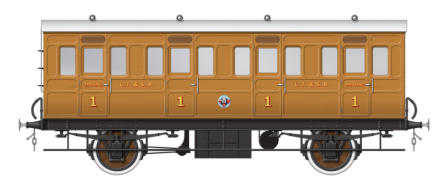
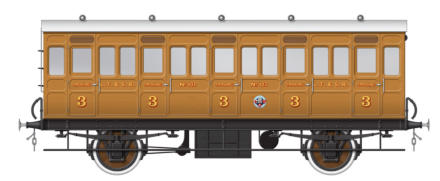

Top Row: The standard goods wagon of all the railway
companies was the open wagon, which was used for
the transportation of bulk goods. A variety of designs
allowed for the transportation of various materials
from coal to perishable goods. Illustrated are a
Cambrian Railways five plank tilt wagon and a three
plank open. On the far right is a Cambrian Railways
standard brake van which was built in the mid 1890s
and survived until the early 1930s.
Rolling Stock of the Cambrian Railway
usually attached to passenger trains and fitted with
continuous brakes, while their livery was the same as
the carriages. Some of the major railways had
hundreds of these wagons, but from the mid 1920s
their use declined.
Above Right: Typical six wheel carriage for the
Cambrian Railway, this example being a third class
composite with seating for fifty passengers.
Above Right: Typical Standard Covered Goods Van, this
example being built during the 1890s for the
Cambrian Railways.
Above Middle: The conveyance of horses was always
an important part of railways operations, particularly
before the rise of the motor car. These were similar
in specification to the Special Cattle Vans, this time
having a grooms compartment at one end. They were
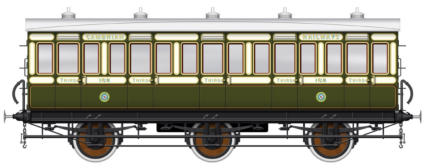
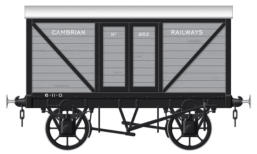

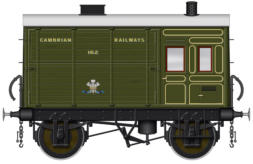
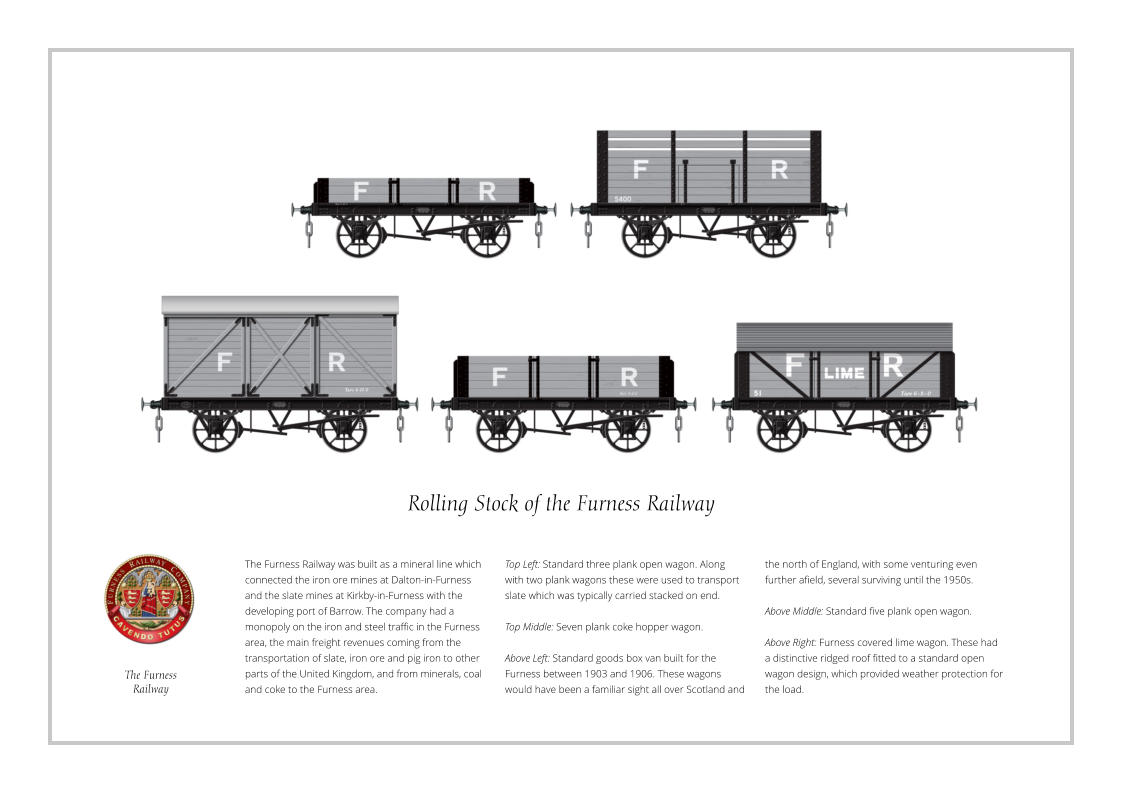
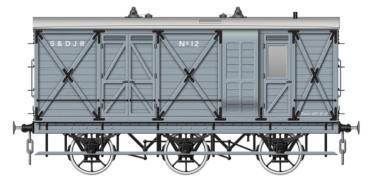
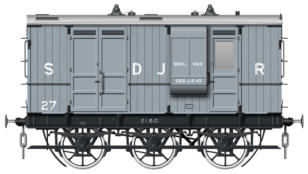

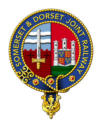

On its inception the Furness Railway was mainly
concerned with mineral traffic, with little regard being
made for the movement of people. Passenger trains
were few and far between, and consisted of
rudimentary four wheeled carriages for the first forty
years of its existence. The first 6 wheeled railway
carriages appeared on the Furness Railway in 1875,
but were a rarity until the mid 1880s when the
company purchased a number of composite vehicles.
Rolling Stock of the Furness Railway
The Furness
Railway
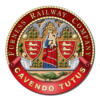
Top: Six wheeled brake third class carriage with one
smoking compartment.
Above Left: Six wheeled composite first/third carriage,
with one first and one third class smoking
compartment.
Above Right: Six wheeled full third class carriage, with
two smoking compartments.
During the 1890s the company recognised the value
of tourism and began to replace its old and decrepit
carriages. The carriages illustrated are typical of
those supplied by the Metropolitan Carriage and
wagon and the Ashbury Railway Carriage and Iron
Companies, with at least 140 being in stock in 1923
when the Furness became part of the L.M.S. The last
recorded place for one of these carriages was at
Cleator Moor in 1955.

The first bogie carriages appeared on the Furness
Railway in 1897, and consisted of twelve semi
corridor composite lavatory vehicles similar design,
although six were fitted with a Guard’s brake
compartment which was replaced with a luggage
compartment in the remainder. The layout inside the
brake bogie composites consisted of two first class
and three third class compartments, with two
lavatories situated in the middle of the vehicle which
Rolling Stock of the Furness Railway
The Furness
Railway

Manchester. Only fourteen such vehicles were built,
and consisted of full thirds with seven compartments
and composite stock with three first and four third,
both types having side corridors and end vestibules
and lavatories at each end.
Top: Full third bogie brake carriage.
Above: Bogie composite luggage carriage.
separated the first and third class accommodation.
The luggage composite vehicles were similarly fitted
but with an extra third class compartment. In 1903 a
further six semi corridor composite coaches were
built for the company, but had lavatories for first
class passengers only. Bogie corridor stock with end
connections first appeared in 1903. These were used
for the through coaches from Barrow to major
destinations in the U.K. such as London and
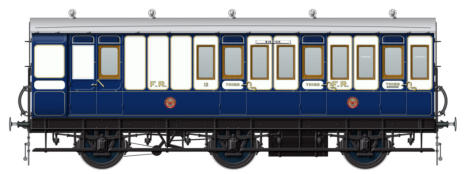
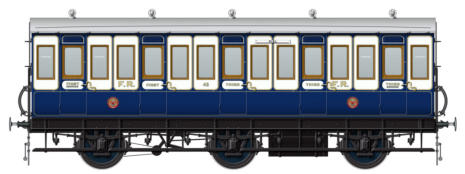
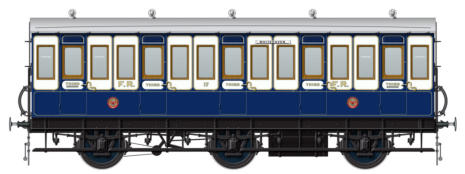


Scroll down to see all the illustrations on the page








Pages







Pages













